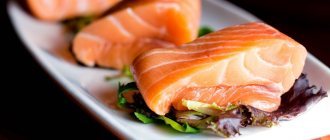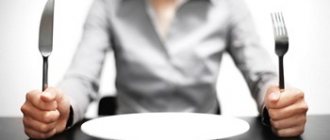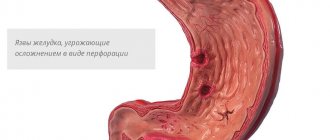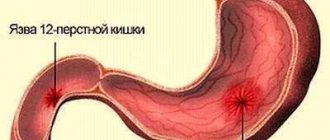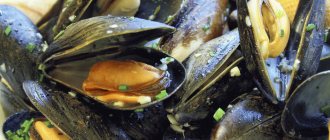Gastritis is a common disease with characteristic inflammatory processes in the stomach. Clinically, the pathology is manifested by intense pain in the epigastric region, nausea and bloating.
The reason for the development of gastritis is regular eating disorders, overeating, and eating “junk” food. The main conditions for restoring the functions of the digestive tract are following a diet and avoiding foods harmful to the stomach. Therefore, for patients with gastritis, it is important to find out whether it is permissible to include red caviar in the diet during illness and whether the product will harm health.
Is it possible to eat caviar with gastritis?
Experts recommend avoiding eating snacks with caviar in case of acute gastritis. The enzymes contained in the product negatively affect the mucous surface of the stomach.
Caviar for hyperacid gastritis
During the period of remission, red caviar can be introduced into the diet, but in limited quantities. If after this product there is pain in the stomach, accompanied by bloating and nausea, this indicates a worsening of the pathology.
In addition, caviar stimulates the production of hydrochloric acid and contains a significant amount of cholesterol and fat. The high calorie content of caviar loads the intestines and gastric mucosa, so it should be avoided in case of pancreatitis and doudenitis.
Caviar for gastritis with decreased acidity of gastric juice
The delicacy is completely contraindicated for people with low acidity of gastric secretions. Concomitant diseases, such as urolithiasis, diabetes mellitus and gout, as well as the high salt content in the product can worsen the patient’s condition. Seafood often contributes to the development of allergies, so it is consumed with caution.
Red caviar description
Red caviar is the caviar of fish of the salmon family, or as they are popularly called, red fish. Red caviar is considered a valuable food product, as it contains a large number of useful components: mineral salts (iodine, calcium, phosphorus), folic acid, vitamins A, B, D and E, lecithin and easily digestible proteins. The nutritional composition of red caviar is truly unique, as it does not contain any harmful fats or carbohydrates. The taste qualities of red caviar are deservedly highly rated.
Red caviar is the caviar of fish of the salmon family, or as they are popularly called red fish.
Red caviar is truly unique in its nutritional qualities and chemical composition. It contains easily digestible proteins - 32%, lecithin - a biologically valuable substance, mineral salts: calcium, iodine and phosphorus, B vitamins, as well as vitamins A, D, E, folic acid. In addition, red caviar does not contain harmful fats and carbohydrates. There are five types of red caviar: trout, sockeye salmon, coho salmon, pink salmon, and chum salmon.
The main distinctive characteristics of red caviar are:
- friability;
- natural color;
- the presence of a point (embryo) inside the egg;
- natural caviar bursts, while artificial caviar is difficult to chew (like rubber).
Red caviar and gastritis
Red caviar is usually called caviar obtained from fish of the salmon family, that is, salmon, trout, pink salmon, chum salmon. Eating red caviar for gastritis is not advisable, especially if we are talking about this disease in its acute stage. During remission of chronic gastritis, it is still allowed to eat a small amount of red caviar - the main thing is to remember in moderation.
The fact is that it itself is one of the fatty foods that contain an excessive amount of salt. Therefore, eating red caviar for gastritis leads to increased stomach acidity, which is unacceptable, especially if gastritis develops as a type of low acidity. And the acute form of gastritis, if there is no timely treatment, quickly becomes chronic.
Restrictions on caviar consumption
The consumption of caviar has restrictions. It must be completely excluded in case of gout, pancreatitis, diabetes and kidney disease. The product increases the production of gastric juice, which is unacceptable for gastritis. Caviar also provokes an exacerbation of other pathologies associated with inflammatory processes in the gastric mucosa.
Abuse of the delicacy leads to exacerbation of pancreatitis and cholecystitis.
Caviar increases appetite. This fact must be taken into account by overweight people. And the presence of an allergic reaction to the product is a direct contraindication to its use. If there are no contraindications listed above, moderate introduction into the diet most often does not cause negative consequences or pain in the stomach.
Classification of gastritis
It is an inflammation of the gastric mucosa. It can occur in acute and chronic form.
In addition to these two forms, atypical forms of the disease are distinguished (allergic, lymphocytic, etc.).
When choosing specific dishes, the acidity of the stomach is of significant importance, against the background of which gastritis is observed. It can be low, high or normal.
Acidity refers to the concentration of hydrochloric acid in gastric juice. It performs a number of important functions in the stomach, in particular, it prepares proteins for subsequent breakdown by enzymes, promotes the normal evacuation of food from the stomach, etc.
The disease can affect the outlet of the stomach (antral type), the body of the organ (fundic type). When inflammation spreads to the entire stomach, they speak of pangastritis.
There is a division according to the depth of damage to the mucous membrane and the characteristics of the course of the inflammatory process (catarrhal, phlegmonous, erosive, etc.).
Abdominal pain is a typical syndrome
Precautionary measures
When consuming caviar, precautions should be taken:
- eat it in moderation and not on an empty stomach;
- Avoid taking the product for breakfast;
- When purchasing, give preference to trusted stores and manufacturers.
It is unacceptable to consume caviar during periods of exacerbation of gastritis. Subject to simple precautions, the delicacy can be on the table even every day.
Nutrition
The main rule of nutrition is to spare the stomach.
Whatever the gastritis, it is necessary to protect the stomach from mechanical, thermal and chemical negative influences. Food should have minimal irritating effect on the mucous membrane and leave it quickly.
You should not eat food containing coarse raw fiber (fresh cabbage, carrots, etc.).
You cannot eat cold or hot foods, they must be warm.
Spicy seasonings are abolished.
It is recommended to boil or steam the products. Sometimes you can bake it, frying is prohibited.
You need to eat in small portions (five to six times a day).
The list of foods that are prohibited for gastritis is long, so it is impossible to list them all. The following is a list of everyday foods that should be excluded from the menu:
- smoked meats;
- canned food;
- fatty meat and fish;
- lard and offal;
- legumes;
- hard boiled eggs;
- baked goods and fresh bread;
- chocolate;
- ice cream;
- coffee;
- carbonated drinks;
- alcohol.
Recommended serving
If the acidity of the stomach is increased, it is recommended to consume no more than one dessert spoon per day. Therapeutic diets often include seafood in their menu, including red caviar. The ideal option is salted fresh product. But the downside of this delicacy is its pronounced fishy smell and bitter taste.
You are allowed to eat no more than 50 g of caviar daily. This amount is enough to replenish the body's loss of iron and protein. At the same time, it is recommended to exclude fermented milk products.
Symptoms
Manifestations of the disease depend on its form, the stage of the disease, and the characteristics of damage to the mucosa.
Pain occurs in the epigastric region, which is located directly under the xiphoid process. They can be strong, for example, in the acute form, moderate, weak, or even absent, as in chronic gastritis with low acidity.
Other symptoms of acute gastritis include: belching, nausea, vomiting, and frequent bowel movements. There are manifestations at the general level of the body (dizziness, weakness, weakness). The symptoms are most pronounced when the cause of the disease is bacterial. The person is chilling, muscles and bones ache.
Chronic gastritis with high acidity makes itself felt by sour belching and heartburn.
If the acidity is reduced, bitterness in the mouth, belching of air, nausea in the morning, flatulence, and a feeling of heaviness in the stomach are observed.
Other forms have their own specific symptoms, for example, with the erosive form there is blood when vomiting.
Is it possible to cure gastritis with caviar?
For patients with gastritis, the duration of therapy, including diet, is at least 3 months. Including only red caviar in the diet does not have a healing or therapeutic effect.
You can benefit from eating caviar if you strictly follow your doctor’s diet recommendations.
It is necessary to create a menu so that the correct balance of microelements and vitamins is maintained. The protein contained in seafood can restore the soft epithelium of the stomach.
If the acidity of the stomach is low, the delicacy is allowed into the diet in moderation and only during the daytime. To prevent exacerbation, consuming the product on an empty stomach and for breakfast is prohibited.
What are the benefits of red caviar
There is no debate about the benefits of red caviar. Since ancient times, sailors stocked up on dried food, which made it possible to satisfy their hunger. The delicacy is rich in amino acids, minerals, vitamins, lecithin and protein. These substances strengthen the immune system.
Introducing red caviar into the diet in moderation helps:
- improving the functioning of the cardiovascular system;
- normalizes metabolism;
- improves general condition;
- promotes weight loss;
- improves blood counts, increases hemoglobin.
One third of the product consists of fats and proteins, which have a beneficial effect on the circulatory system. Eggs also contain minerals, enzymes, iron and fat-soluble vitamins.
The negative side of red caviar
Red caviar contains a lot of fat. They stimulate the production of pancreatic and gastric juice, which leads to a worsening of the condition. Clinically, this is manifested by pain and stomach cramps. Bloating is caused by increased secretion of hydrochloric acid.
The product enhances the production of hydrochloric acid and increases appetite, leading to an increase in daily calories and, as a result, weight. Failure to comply with the recommended daily portion can aggravate cholecystitis and pancreatitis.
Regardless of the manufacturer and processing method, red caviar contains salt and preservatives. They promote the production of pancreatic juice and hydrochloric acid, which leads to inflammation and swelling of the gastric mucosa.
The speed of recovery depends on how accurately the patient follows all the doctor’s instructions. If red caviar is allowed, it is important to comply with the daily intake, and gastrointestinal health problems will not arise.
What are the benefits of caviar?
The beneficial properties of caviar have been known to people for a long time. Documented information has been preserved that even a thousand years ago, sailors took with them a supply of dried red caviar. The product allowed me to satisfy hunger under heavy loads.
Red caviar is obtained from fish of the salmon family. The product contains protein, lecithin, minerals and amino acids, which improves the body's immunity. In terms of the amount of useful substances it is not inferior to black caviar.
What is red caviar rich in?
Caviar contains:
- fat-soluble vitamins;
- iron and a number of minerals;
- easily digestible proteins;
- lecithin.
The negative side of the product is the increased salt and cholesterol content: consuming caviar during exacerbation of gastritis is not recommended.
Effect on the body
With regular consumption of red caviar:
- Hemoglobin levels and blood counts increase. Relevant after gastric bleeding and in the postoperative period.
- Weight is normalized.
- Immunity is strengthened and metabolic processes are normalized. Due to the protein composition (30%) of the product.
- The condition of the cardiovascular system improves thanks to polyunsaturated fatty acids.
